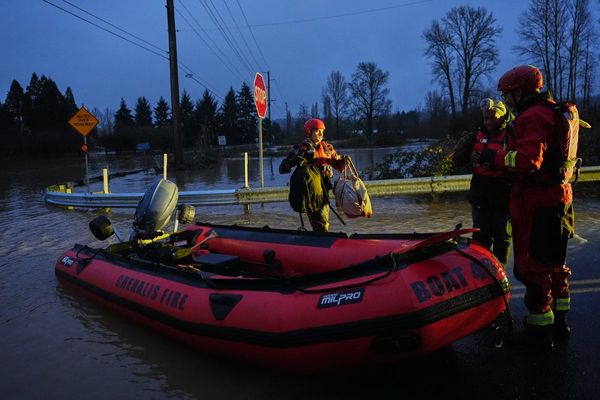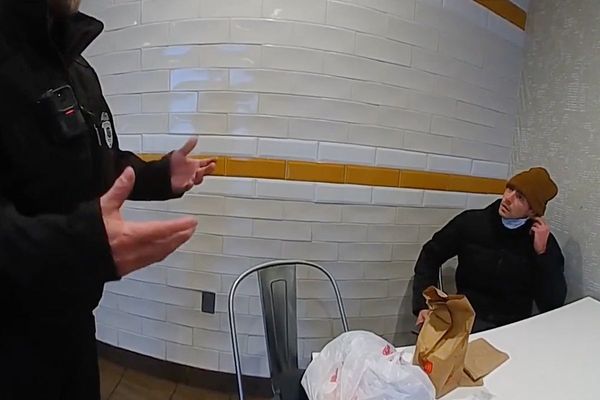
British scientists have an audacious dream. They want to house a giant international particle detector that would be built 3,000ft underground in a working mine in Yorkshire. The device, they say, would give them a last clear chance to pinpoint what is the source of one of the universe’s greatest mysteries: dark matter.
“We are entering the last-chance saloon to show that these particles are the cause of dark matter, and we want to make sure Britain is at the heart of that work by building the final generation of these detectors,” physicist Professor Chamkaur Ghag of University College London told the Observer.
The new detector would be built at Boulby in North Yorkshire where scientists have already established an underground research centre to house a range of experiments on materials, environment and other topics. Some of the first attempts to detect dark matter particles were also carried out here.
Scientists know the universe contains more matter than can be detected directly because they can see that galaxies are held together in clusters when they should be flying apart. Extra mass must be generating more gravity and holding these galaxies together.

But what is this mysterious dark matter made of? After discounting all other possibilities, most researchers have concluded that particles called weakly interacting massive particles – Wimps – are responsible. These subatomic entities are the most likely source of dark matter, which accounts for around 85% of the universe’s mass, it is believed.
However, Wimps rarely interact with normal matter and so researchers have built more and more sensitive detectors to find them. These aim to pinpoint telltale flashes of light that might be emitted when a Wimp strikes the nucleus of a Xenon atom. Despite placing these instruments deep underground, where they are protected against the cosmic rays and particles that batter the surface of our planet, no Wimps have been detected despite two decades of searching.
“We are getting very near the end of the road in the hunt for Wimps,” said Ghag. “If we don’t detect them with the current detectors, then Wimps will be in trouble – and the next generation will take us to the limit of our ability to spot them clearly.”
Ghag said that when detectors reach a certain level of sensitivity – as will be reached with the next generation of devices – then the signals they might start to pick up from Wimps would be confused with signals from other particles such as neutrinos. This limit is known as the neutrino fog.
“The next generation of detectors will not necessarily be the last one to be developed, but once we reach the neutrino fog it will be more difficult to spot Wimps,” said Professor Sean Paling, director of the Boulby Underground Laboratory. At present, several different groups are seeking Wimps at sites that include a mine in South Dakota as well as centres in Italy, China and Japan. The most recent of these to reveal research results was the South Dakota team who last week reported that they had found no evidence of Wimps in detectors on their experiment.

“We have a couple more years to collect data from the current generation of detectors,” added Ghag. “We might find Wimps in that time. Certainly I hope we do. If not, we will have one more chance. That will come in the form of the next generation of detectors that could detect Wimps down to the point of encountering the neutrino fog.”
For this effort, it has been agreed by the different groups to combine their resources and select one site where they would concentrate their resources in a final push to find the Wimp. The project would be known as the XLZD experiment. “And what we are striving to do in Britain is to get it built at Boulby. Essentially, we want the last-chance saloon for Wimps to be built in the UK,” said Ghag.
This point was backed by Paling: “The technology behind the xenon detectors that everyone uses to search for Wimps was pioneered in Britain so it would be fitting that this country finalises the hunt.”
Boulby mine lies on the east coast of the North Yorkshire moors where a sprawling labyrinth of galleries, covering hundreds of miles, has been carved out 3,000ft underground. Apart from being Britain’s deepest mine – a perfect spot to erect a dark matter detector suite – it contains many other laboratories and homes to different research groups.
It is not the only candidate for the next generation Wimp-detectors, however. Apart from the mine in South Dakota, Italy has built a highly sophisticated underground laboratory beneath the Gran Sasso mountain range, around 80 miles from Rome. These two centres, plus Boulby, are considered the main candidates for the new international dark matter centre.
“Over the next two years, we will be gathering schedule information, details of laboratory design and projected costs,” added Paling.
“We will also be talking to the government while trying to get a better picture of what other governments think about the project. Nothing has been agreed yet about funding but we will be ready in a couple of years.
“The UK is lucky to have a site like this and we want to make sure we get the most out of it.”
• This article was amended on 6 August 2023. An earlier version referred to Boulby as a potash mine; this was the case but in recent years it has switched to mining polyhalite.







